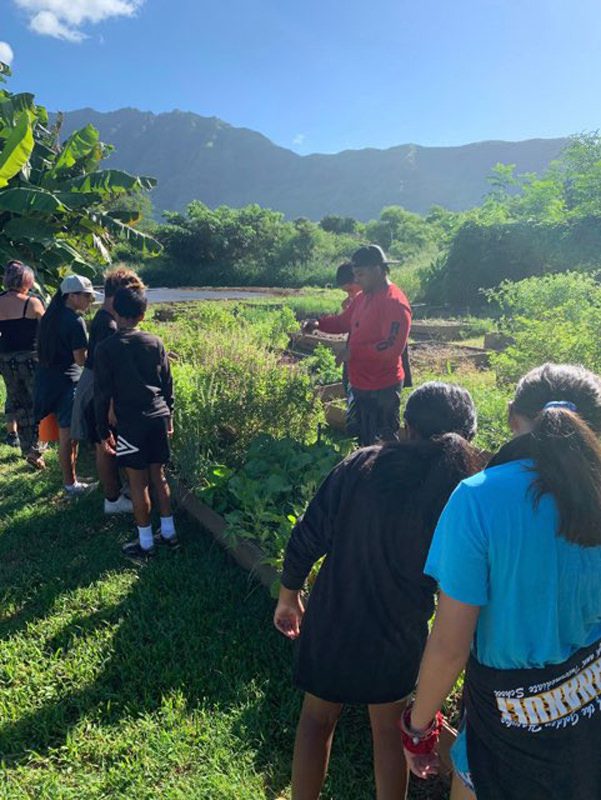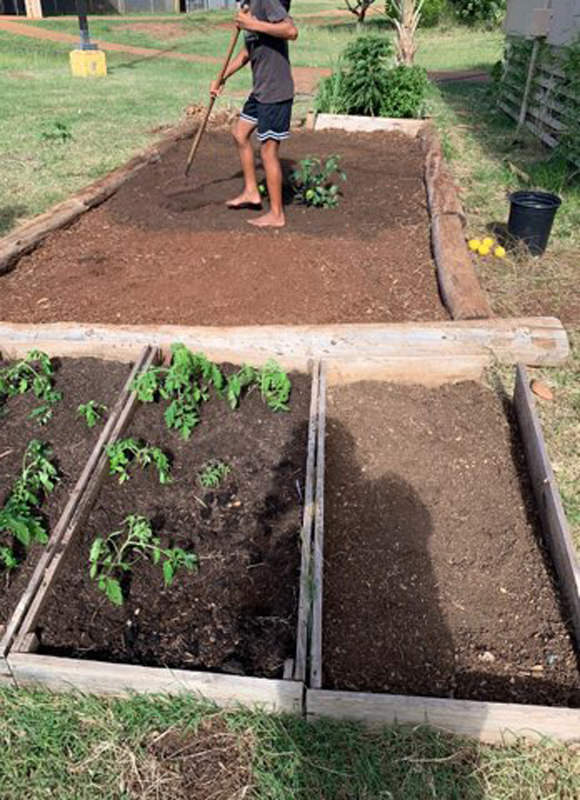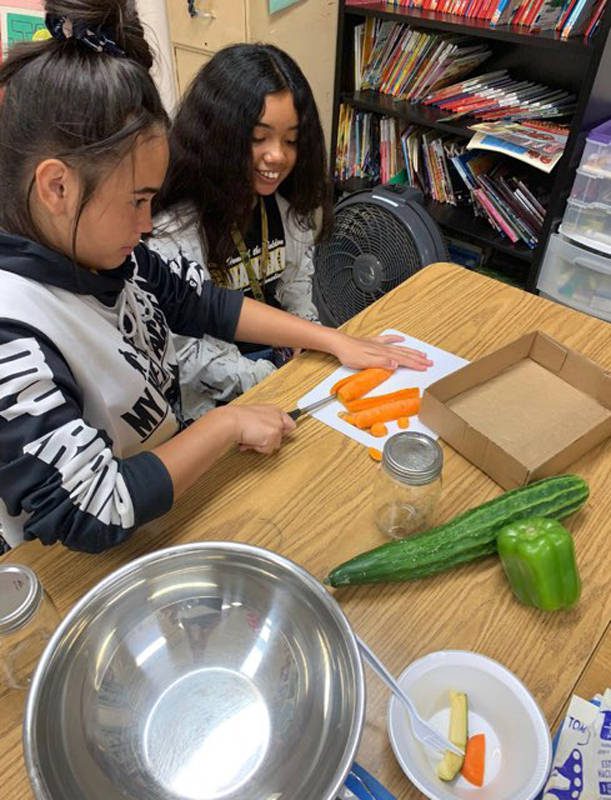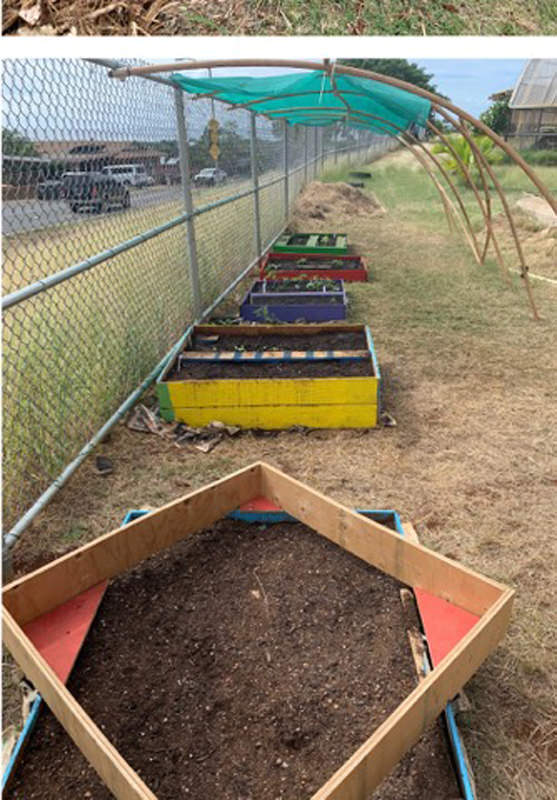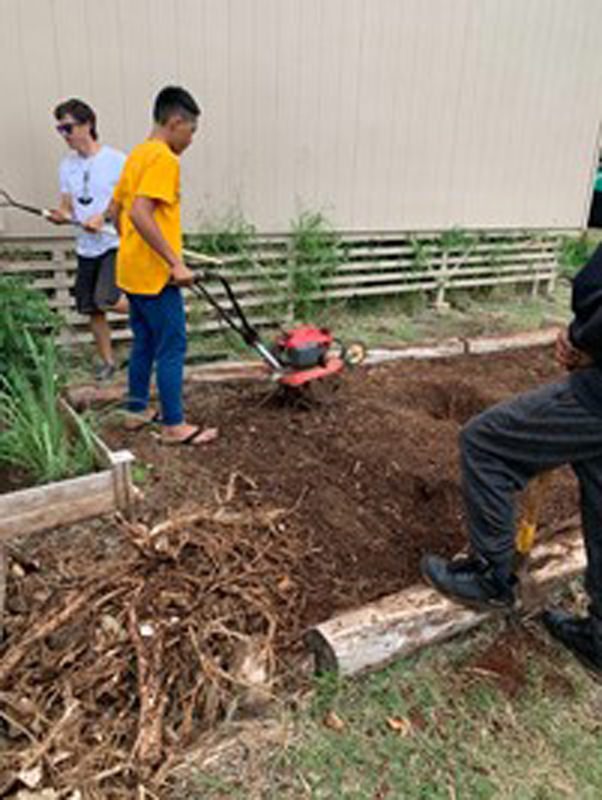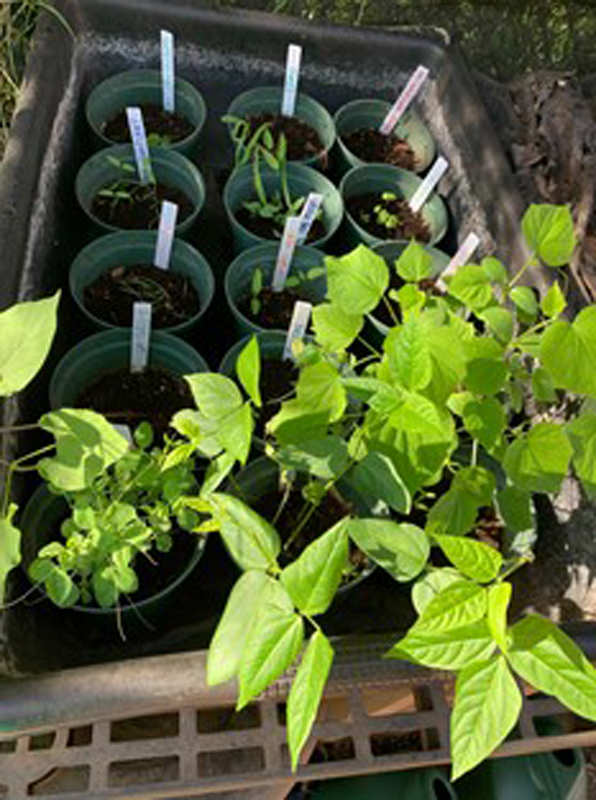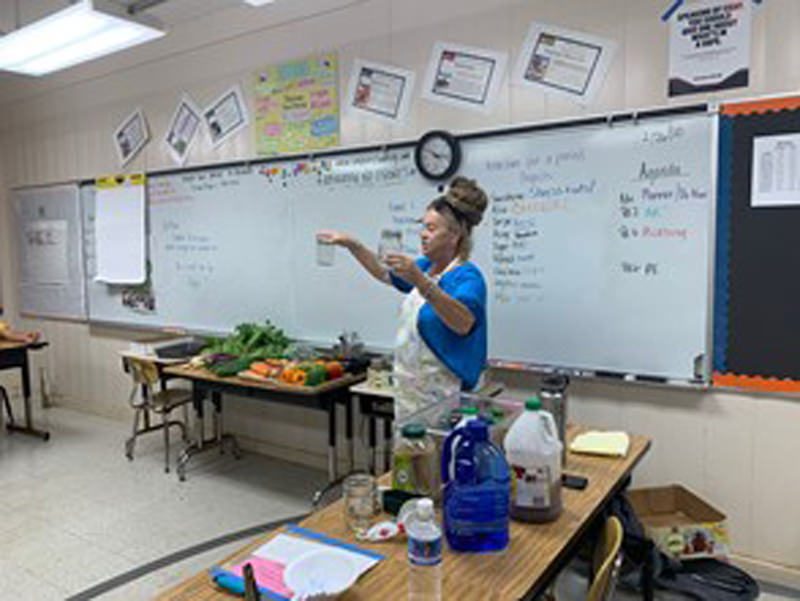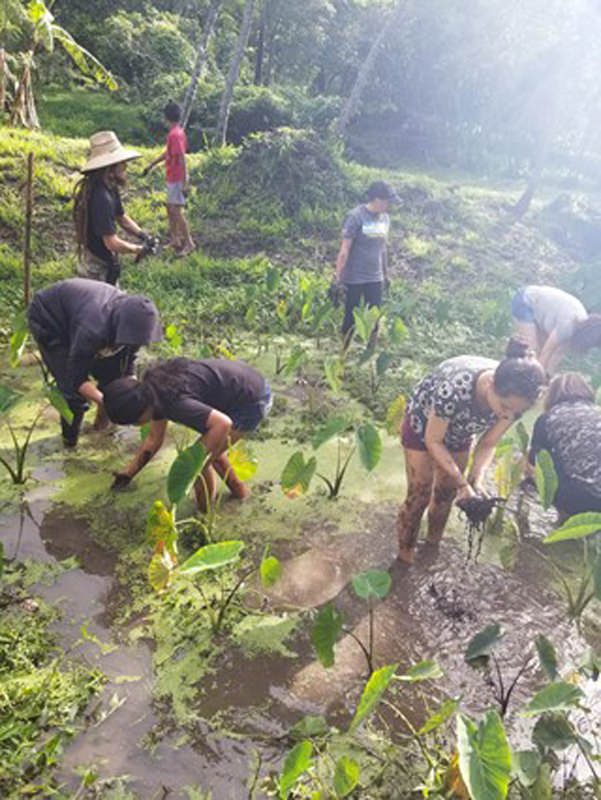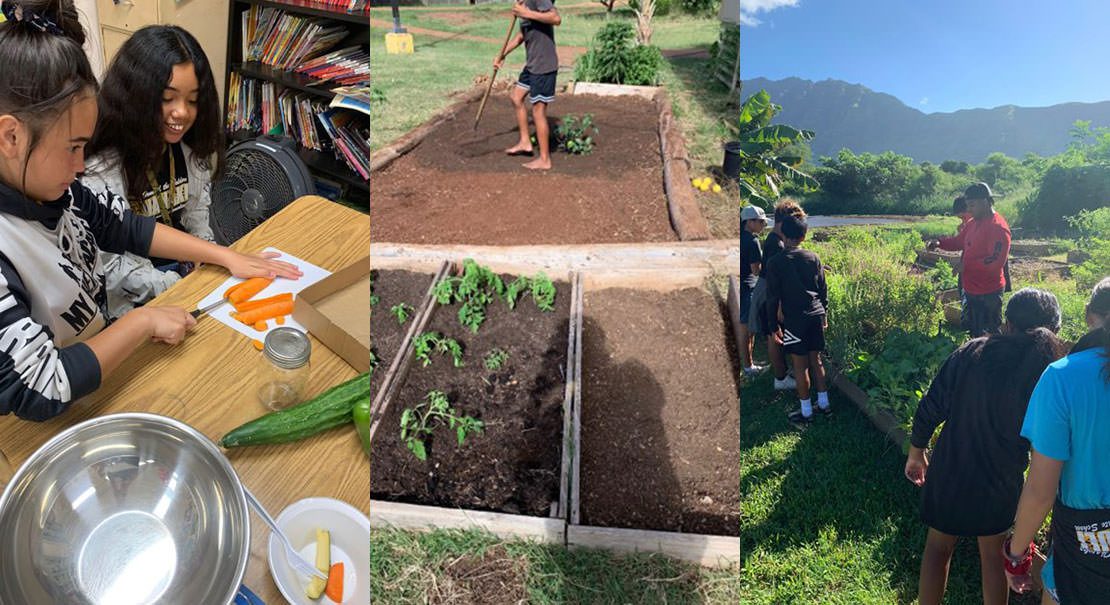
School: Nānākuli High and Intermediate
Grade Level: 7th and 8th
Teacher: Cassandra Christensen
Driving Questions:
- What does it mean to live healthily?
- How can students learn to live healthily through growing, planting, and cooking?
What did the students do?
Semester 1:
The project for this class is focused around healthy living, healthy eating and learning to grow and cook their own food. The teacher’s ultimate goal was to build a class garden on campus that the students had access to daily. At the beginning of the year, students started by learning about soil. The math focus was on ratios and percentages as they learned the composition of soil and parts of a whole (ccss.math.content.7.ee.b.3). Students took samples of soil from different areas outside their classroom and compared them and eventually made a decision where the healthiest soil was and where they could plant certain plants. Physically, students got outside weekly to help prep the soil and clear different areas for planting.
For healthy snacks, students were able to try a number of new foods. One of the vegetables students were able to bring back from Hoa ʻĀina o Mākaha was eggplant. Students’ tried lightly fried panko breaded eggplants. Students also learned how to make ʻulu chips as a healthy alternative to potato chips. In the second quarter, students had a guest come in to measure their antioxidant levels as a pre test. She then provided them with natural lemonade (natural sweetener) to leave in the classroom for a month for students to drink as an alternative to sweet drinks they may otherwise consume.
Students’ main focus for literacy was in doing independent research on school gardens and grow beds. They used primary and secondary resources to help create their own designs. The math focus was on numbers and measurements as students built their grow bed designs out of old, recycled pallets. Students also cared for starter plants and propagated them to later transfer into their grow beds when they were complete.
Semester 2:
In the second semester, Students continued to work in and maintain their gardens. Students got to a point where they were harvesting weekly and cooking often with produce from their garden. Students continued to work on numbers and measurements as they shifted into collecting quantitative data on the plants in their garden. They were also using different measurements and conversions in different recipes. They continued to do research and read expository material on natural pesticides and how to care and maintain their garden. This quarter students have made their own recipe for pesticides using neem leaves and soap. They also tried pickling different vegetables so when their daikon and cucumbers are ready to harvest, they can pickle them as well.
This class decided that for a final product of their work, they would like to put together a recipe book, writing how-to’s, for each of the dishes they have been making to give to their families. They also wanted to host a dinner for their families at the end of the year with the dishes they have learned to make over the year.
Place-Based Field Experiences/Connections
Semester 1:
The field experiences for this quarter included trips to Hoa ʻĀina o Mākaha, a community farm in Makaha, as well as a trip to the Cultural Learning Center at Ka’ala. Students read the information on these sites before visiting, and while there they worked to help farmers remove weeds and care for kalo. At Ka’ala, students learned the cultural history of the kalo plant. While at Hoa ʻĀina o Mākaha, students learned about different plants and vegetables and were able to take starters and samples home with them for their own school garden. In the second quarter, students took another trip to Hoa ʻĀina o Mākaha, this time to talk with an expert on different grow bed designs and what options for irrigation they may have.
Semester 2:
Students continued to take field experiences to connect different types of agricultural practices to the work they are doing at school. This group visited Ka’ala again to work in the lo’i and learn about kalo. They continue to visit Hoa ʻĀina o Mākaha to work and learn about products that are being grown in a similar style to their garden beds at school. The teacher had planned to do an overnight camp up at Camp Pālehua for the first week of April but unfortunately had to cancel that trip with the postponement of school. Students were also getting biweekly visits from Auntie Terri prior to spring break as well to learn different recipes and how to cook with some of the produce they grew.





